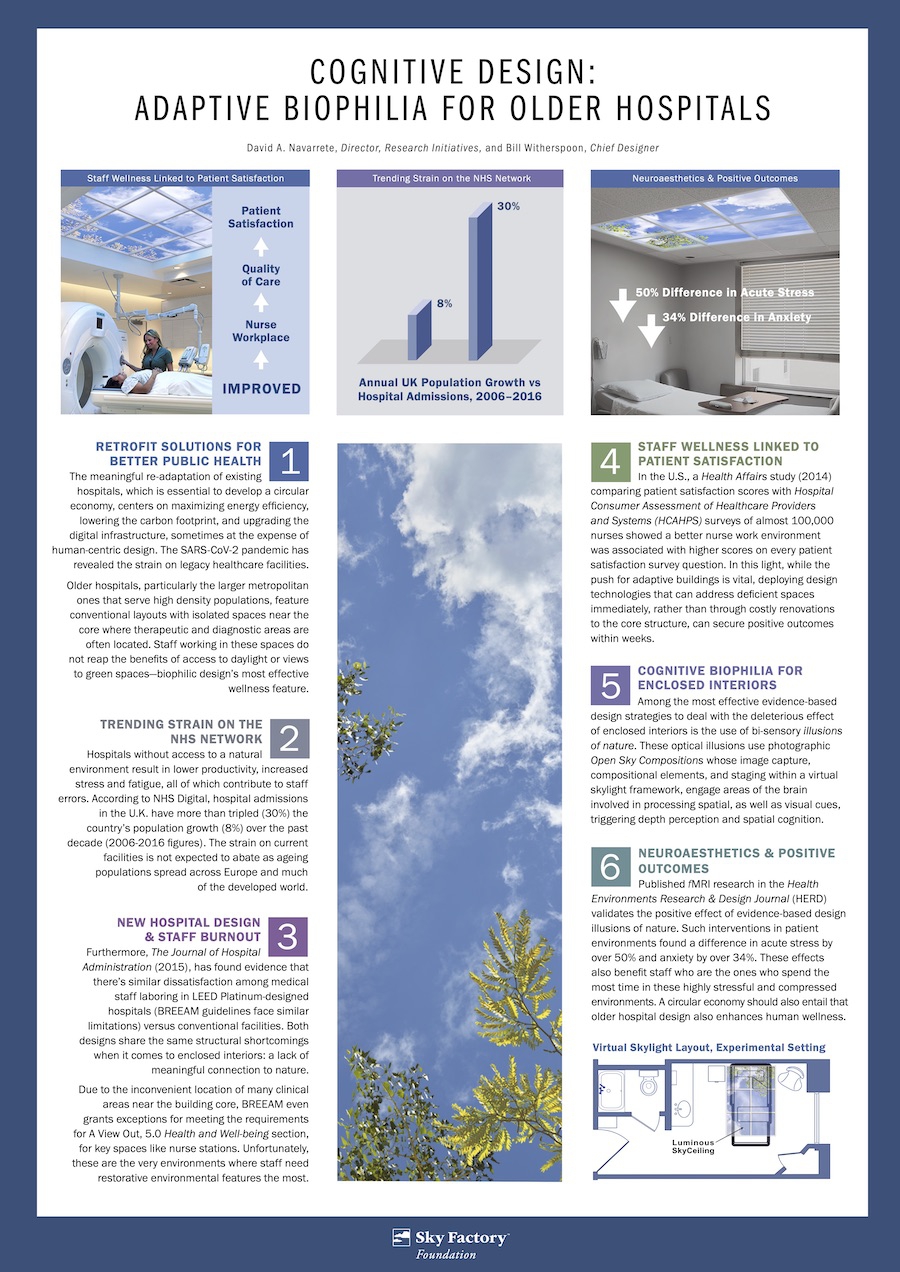Healthcare / Access to nature
European Healthcare Design 2020
Cognitive design: adaptive biophilia for older hospitals
By David Navarrete and Bill Witherspoon | 06 Nov 2020 | 0
This poster presentation focuses on the use of multisensory illusions of nature as an effective evidence-based design strategy for adapting older hospitals.
Abstract
Re-adaptation of existing hospitals centres on maximising energy efficiency, lowering the carbon footprint, and upgrading the digital infrastructure, albeit overlooking human wellness.
Older hospitals, particularly larger metropolitan ones, feature conventional layouts with isolated spaces near the core where therapeutic and diagnostic spaces are often located. Staff working in these spaces don’t reap the benefits of access to daylight or views to green spaces – biophilic design’s most effective wellness feature.
Hospitals without access to a natural environment result in lower productivity, increased stress and fatigue, all of which contribute to staff errors. The Journal of Hospital Administration has found evidence (2015) of dissatisfaction among medical staff labouring in LEED Platinum-designed hospitals versus conventional facilities. Both designs share the same structural shortcomings when it comes to enclosed interiors: a lack of meaningful connection to nature.
In the US, a Health Affairs study (2014) comparing patient-satisfaction scores with Hospital Consumer Assessment of Healthcare Providers and Systems (HCAHPS) surveys of almost 100,000 nurses showed a better nurse work environment was associated with higher scores on every patient-satisfaction survey question. In this light, while the push for adaptive buildings is vital, deploying design technologies that can address deficient spaces immediately, rather than through costly renovations, can secure positive outcomes within weeks. Among the most effective evidence-based design strategies to deal with the deleterious effect of enclosed interiors is the use of multisensory illusions of nature. Open Sky Compositions are optical illusions that compose, capture and mount sky photography to engage areas of the brain involved in visual processing, as well as depth perception and spatial cognition.
Published research in the Health Environments Research & Design Journal (HERD) validates the positive effect of evidence-based design illusions of nature. Such interventions in patient environments reduced acute stress by over half, and anxiety by over 34 per cent; these effects also benefit staff who are the ones who spend the most time in these highly stressful and compressed environments. A circular economy demands that older hospital design also enhances human wellness.
Organisations involved

